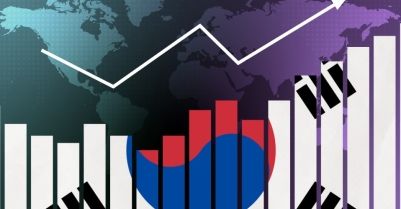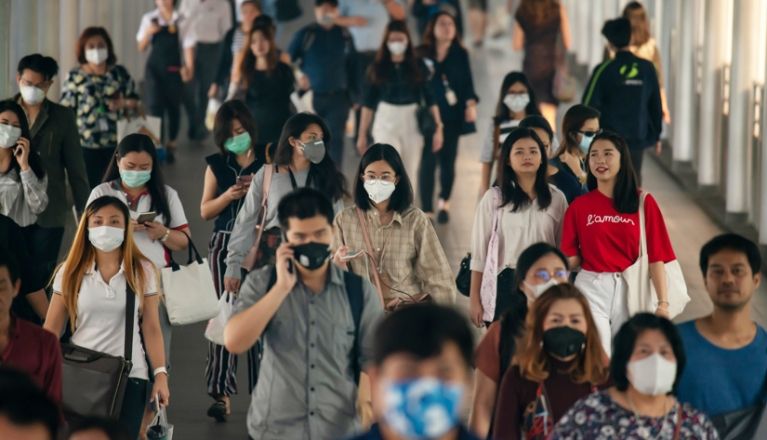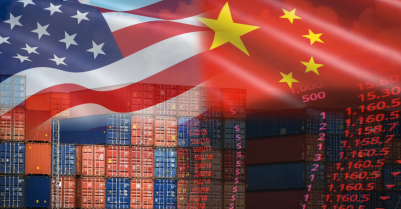-
View article
 #Economy
#EconomySouth Korea: a year after the political crisis, markets are buying the promise of stability
2025/12/17
Asia: which countries have come through the crisis best?
Nine months after the public health shock first hit and spread all over the world, the time has come to begin to take stock of its impact. In Asia, the recovery looks patchy and will depend on many factors, chief among them the approach to managing subsequent waves of the epidemic. This makes it difficult to implement a traditional crisis exit scenario.

Relatively unscathed by the 2009 financial crisis, Asian countries were thought to be invincible: having learned the necessary lessons from the crises of the late 1990s, they put in place a stronger macroeconomic framework and maintained very buoyant growth trajectories. But the COVID-19 crisis, exceptional in both scale and intensity, has turned Asia’s economies – which are very open and dependent on external inflows – upside down. After a record slowdown in the second quarter due to lockdown measures, the recovery is beginning to bite, though it remains contingent on the evolving public health situation.
What are the indicators on which recovery depends?
Each economy’s ability to recover will depend on a number of factors: first, how the crisis is managed and the economic impact of containment measures; second, the country’s level of wealth and development before the crisis, which goes some way towards determining how resilient households and businesses will be; third, how much room for manoeuvre governments have in making up for the collapse in some sections of the economy, and how effectively they manage to do so; and lastly, for each country, the growth structure and model, how diversified its production system is, how dependent it is on the outside world (notably for tourism) and the role of private sector consumption. Nor must we forget the impact of markets, which determine the extent to which governments and businesses can raise debt financing, and which can sometimes exacerbate perceived currency imbalances.
Why are there so many criteria in this list? Simply because the crisis is without precedent and economies will continue to be vulnerable until a vaccine and/or effective treatment is found. However, some countries have been hit less hard than others.
China, Taiwan and Vietnam: champions of growth
In Asia, first prize goes to those countries that have handled the public health crisis well: Taiwan and Vietnam, which managed to avoid overly harsh lockdowns, thus protecting their economies. Both also rely on a powerful export model partly specialising in electronic components, a fast-expanding sector. Since 2018, they have also benefited from the US/China trade war, receiving new inward investment from companies previously operating in China. With tensions between the two countries far from eased, this trend is set to continue. Then we have South Korea which, having had to contend with a second and then a third wave of cases and the attendant impact on the economy, will undoubtedly not be able to avoid a slight recession in 2020. However, it can rely on very strong macroeconomic fundamentals, a high level of development and a recovery plan of unprecedented scale adroitly managed by the government to bounce back in 2021.
And how can we not talk about China? As well as being the epicentre of the pandemic, it was also the first country to officially emerge from the public health emergency. In keeping with their usual approach, the Chinese authorities encouraged banks – publicly owned – to provide businesses with the necessary liquidity and to increase new lending, at the same time as boosting manufacturing order books by stepping up public investment. Although this supply-side stimulus did indeed boost the recovery, enabling China to post positive growth in the second quarter, demand remains sluggish. Retail sales took eight months to return anywhere near to pre-crisis levels, and people are still avoiding restaurants and shopping centres. This ambient level of worry is also affecting choices between consumer spending and precautionary savings, with the vast majority of people opting for the latter due to negative labour market expectations: for the time being, the labour market is not able to create enough jobs to offset job losses resulting from the crisis and absorb the number of new entrants.
Southeast Asia struggling to emerge from the public health crisis
In the rest of the region, led by the ASEAN countries and Asia, the spectre of the public health crisis still looms too large to be able to evaluate recovery trajectories. Some ASEAN economies, very open to the outside world, are going to have to step up their efforts to diversify to make up for the slump in certain sectors, chiefly tourism. Meanwhile, India is currently experiencing the biggest drop in economic activity of any country in the G20 or the region.
Based purely on the numbers, most Asian countries will not be able to escape recession this year. However, in a world where everything is becoming increasingly relative, and where performance will be compared with that of neighbours and other regions, Asia still looks like a resilient and fortunate continent. Still young and flexible, Asian economies play an essential role in value chains and benefit from their proximity to China – which, although weakened, still generates significant spillover effects. Even COVID-19 is unlikely to be able to undermine this status.
Sophie Wieviorka
Economist – Asia








